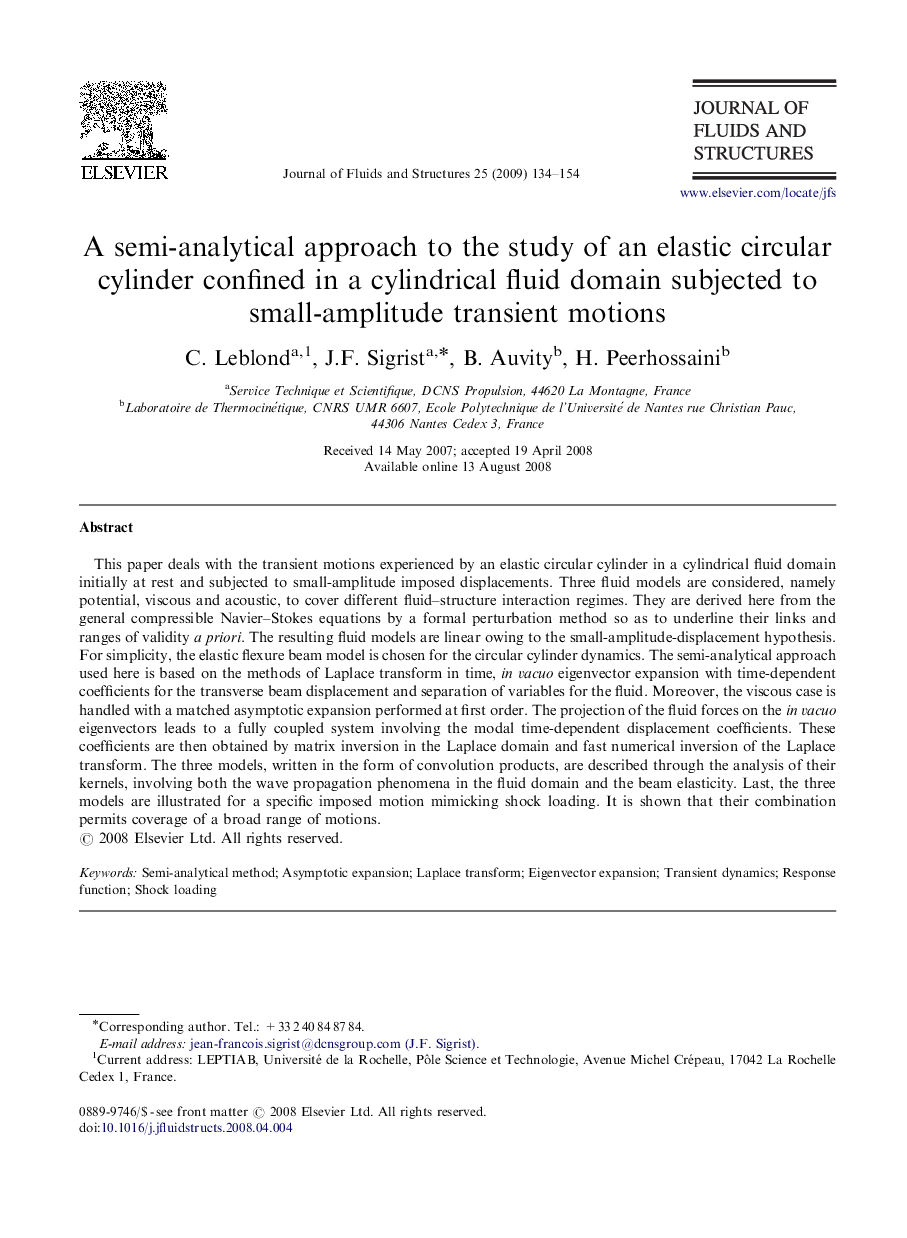| Article ID | Journal | Published Year | Pages | File Type |
|---|---|---|---|---|
| 792525 | Journal of Fluids and Structures | 2009 | 21 Pages |
This paper deals with the transient motions experienced by an elastic circular cylinder in a cylindrical fluid domain initially at rest and subjected to small-amplitude imposed displacements. Three fluid models are considered, namely potential, viscous and acoustic, to cover different fluid–structure interaction regimes. They are derived here from the general compressible Navier–Stokes equations by a formal perturbation method so as to underline their links and ranges of validity a priori. The resulting fluid models are linear owing to the small-amplitude-displacement hypothesis. For simplicity, the elastic flexure beam model is chosen for the circular cylinder dynamics. The semi-analytical approach used here is based on the methods of Laplace transform in time, in vacuo eigenvector expansion with time-dependent coefficients for the transverse beam displacement and separation of variables for the fluid. Moreover, the viscous case is handled with a matched asymptotic expansion performed at first order. The projection of the fluid forces on the in vacuo eigenvectors leads to a fully coupled system involving the modal time-dependent displacement coefficients. These coefficients are then obtained by matrix inversion in the Laplace domain and fast numerical inversion of the Laplace transform. The three models, written in the form of convolution products, are described through the analysis of their kernels, involving both the wave propagation phenomena in the fluid domain and the beam elasticity. Last, the three models are illustrated for a specific imposed motion mimicking shock loading. It is shown that their combination permits coverage of a broad range of motions.
